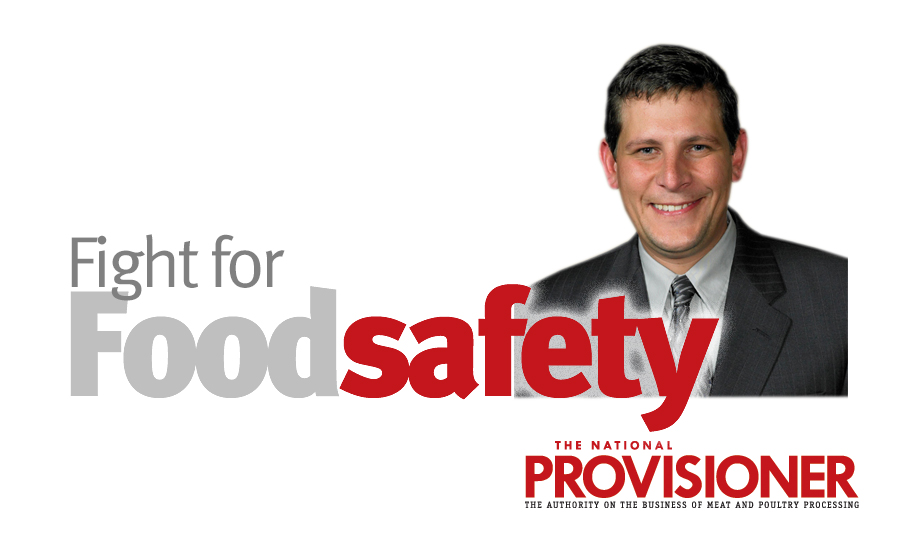Fight for Food Safety
Is it time to upgrade safe-handling warnings?

Are the federally mandated safe-handling warnings present on every raw animal product outdated? For more than 20 years, the Food Safety and Inspection Service (FSIS) has required these products to carry safe-handling labels warning consumers that, although “inspected and passed” as safe and wholesome, the products may nevertheless contain bacteria that could cause illness if mishandled or not thoroughly cooked.
For those of us in with a background in food safety, we know what it means to “properly handle” and “thoroughly cook” raw meat. But what about the average consumer or 18-year-old restaurant cook?
Do consumers really understand that as few as 10 stray cells of E. coli O157:H7 can cause illness, or what it really means to “thoroughly cook” beef or poultry?
When processing ground beef and mechanically tenderized beef products, any pathogens on the surface of those products can be ground or pushed into the interior of the product. As a result, to be safe, those products must be cooked to an internal temperature sufficient to kill any pathogens that might be present. Recognizing that consumers are not adequately educated when it comes to how to safely prepare these products consistently, FSIS is pursuing new initiatives to address the issue.
Without commenting on whether it plans to update the safe-handling instructions for ground beef, FSIS published a final rule mandating the application of new labeling requirements for all mechanically tenderized steaks. Under the rule, the new product labels are required to state that the product is, in fact, mechanically tenderized. They must also carry validated cooking instructions which include: (1) the cooking method; (2) the minimum internal temperature validated to destroy any pathogens that may be present; (3) a statement as to whether the product needs to be held at a specified temperature at a specified time before consumption; and (4) an instruction that the temperature should be measured by use of a thermometer. The new labeling requirements go into effect on May 16, 2016.
Proponents of the rule argue that it’s needed because consumers cannot tell by simply looking at a mechanically tenderized steak that the steak has been tenderized. As a result, end users may mistakenly believe that cooking a product rare or medium-rare is safe. With new labels, end users will have specific instructions enabling them to cook the product in such a way as to make it safe.
Although no one can predict the future, I suspect FSIS will soon propose similar labeling requirements for ground beef. In the final rule, FSIS confirmed that it is looking at ways to “modify the current safe-handling instruction requirements to improve consumer food safety behaviors.”
If this is true, expect that, as the agency continues to upgrade its rules governing meat processing, it will continue to upgrade the safe-handling labels for those products as well. NP
Looking for a reprint of this article?
From high-res PDFs to custom plaques, order your copy today!






